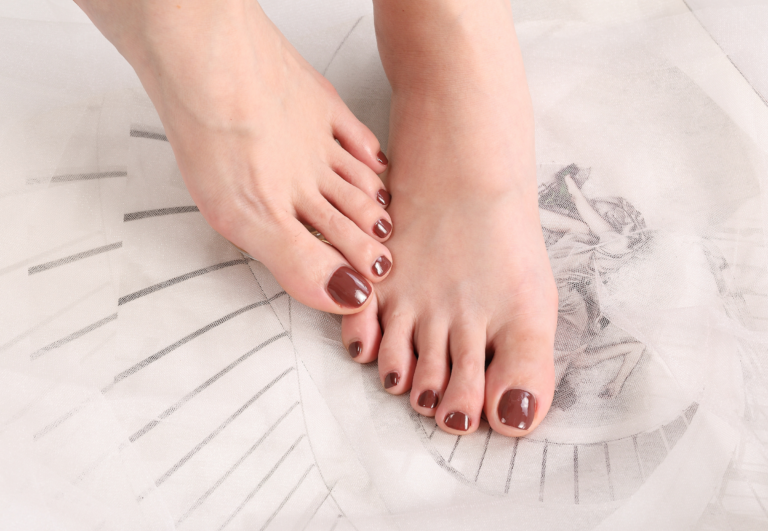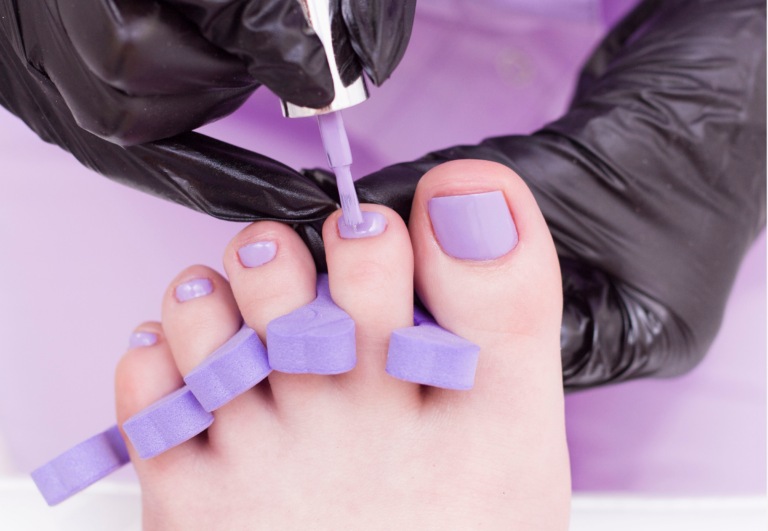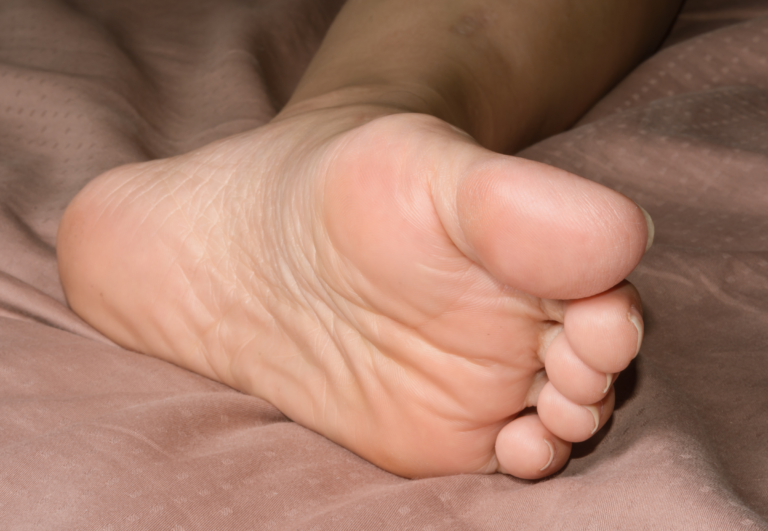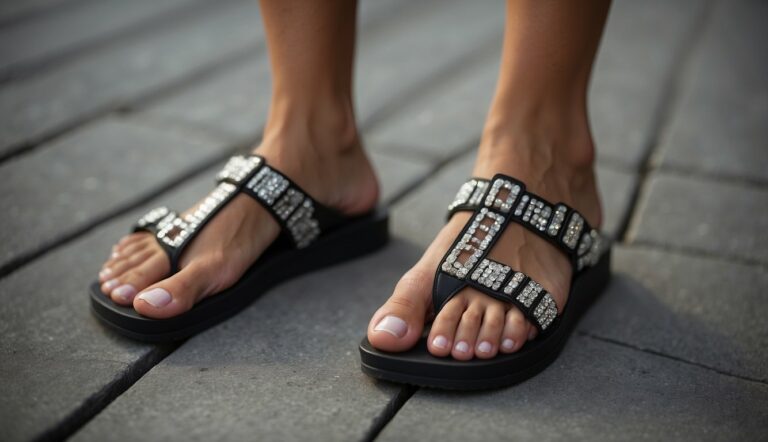Using Toe Spacers for Foot Relaxation Techniques: Maximize Comfort and Alignment
I’ve found that toe spacers can be a simple yet effective tool to enhance foot comfort and relaxation. These devices, which are often made from silicone or similar soft materials, are designed to fit between the toes. Their primary purpose is to realign the toes to their natural position, which can help to alleviate pain from common foot issues, reduce stress on the foot, and increase overall foot comfort.
Implementing toe spacers as part of a foot relaxation routine is quite straightforward. By gently separating the toes, they promote better circulation and allow your feet to relax, especially after a long day of being confined in shoes. These can be particularly helpful when paired with foot relaxation techniques such as foot massages or stretches, contributing to improved foot health and comfort.
In my experience, regular usage of toe spacers can contribute to better posture, balance, and foot mechanics. Whether you’re an athlete looking to recover after intense activity, or simply someone seeking relief from daily foot strain, toe spacers are a non-invasive solution to consider. They offer a passive way to work on your feet’s alignment and provide relaxation without much effort.
How To Use Toe Spacers for Foot Relaxation
Incorporating toe spacers into your routine can aid in addressing issues like bunions, overlapping toes, and hammertoe by promoting proper toe alignment. Here are specific guidelines to ensure their effective use.
Step 1: Choose Comfortable Toe Spacers
Select toe spacers that fit your foot’s anatomy. Silicone spacers are often recommended for their comfort and hygiene. The right size will not overstretch your toes but provide a gentle separation.
Practical Tip: Try different styles and materials to find what feels best for you, considering any allergies or sensitivities.
Step 2: Prepare Your Feet
Ensure your feet are clean to prevent any skin irritation and to keep your toe spacers from sliding out of place. Dry your feet thoroughly to provide the best grip for the spacers.
Practical Tip: Use a gentle, moisturizing soap to keep the skin between your toes from drying out.
Step 3: Insert the Toe Spacers
Gently place the toe spacers between each toe, making sure they sit comfortably. Don’t force them into place, as this can cause discomfort or even pain.
Practical Tip: Apply a small amount of talcum powder to your toes to help the spacers slide into place more easily if needed.
Step 4: Relax in a Comfortable Position
Find a quiet space where you can sit or lie down undisturbed. Use this time to unwind, perhaps while reading or listening to calming music.
Practical Tip: Elevate your feet to reduce swelling and improve circulation while you relax with the spacers in place.
Step 5: Breathe and Let Go
Take deep breaths to help reduce stress and encourage relaxation. Focus on the sensation of your toes gradually separating.
Practical Tip: Practice mindfulness or meditation to enhance the relaxation experience.
Step 6: Gradually Increase Time
Start with short sessions and increase the duration as your toes adapt to the spacers. This helps prevent any potential discomfort.
Practical Tip: Keep a log of your sessions to track your progress and comfort level over time.
Step 7: Combine with Foot Soaks or Massages
Enhance the relaxing effect by soaking your feet in warm water or giving yourself a gentle foot massage either before or after using the spacers.
Practical Tip: Add essential oils like lavender to your foot soak for an aromatherapy effect.
Step 8: Remove and Care for Your Feet
After using the spacers, remove them slowly and give your feet some tender care, such as a gentle massage to encourage blood flow.
Practical Tip: Moisturize your feet after removing the spacers to keep your skin supple and prevent dryness.
Step 9: Clean the Toe Spacers
Wash your toe spacers with mild soap and warm water after each use. Rinse them thoroughly to remove any soap residue.
Practical Tip: Let them air dry on a clean towel away from direct heat or sunlight to maintain their shape and material integrity.
Step 10: Regular Use for Best Results
Incorporate the use of toe spacers into your daily routine for the best results. Consistency is key to achieving and maintaining foot relaxation and health.
Practical Tip: Set a reminder to use your toe spacers at a specific time each day to build a consistent habit.
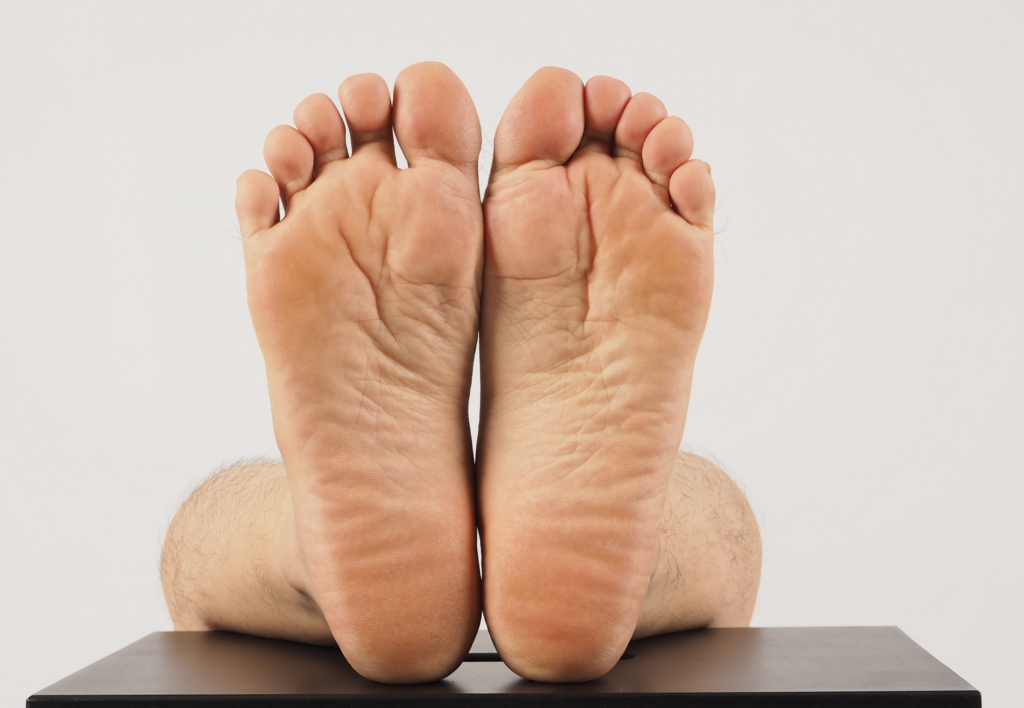
Toe Spacers for Specific Conditions
Toe spacers are recognized for their ability to provide relief and manage various foot-related conditions. Their use aids not just in comfort but also in the functional improvement of the feet.
Management of Foot Deformities
Bunions and hammertoes are common deformities causing significant discomfort and impacting foot mechanics.
From my experience, toe spacers can realign the toes into a more natural position, potentially reducing pain and the progression of such deformities. For those with flat feet, toe spacers may also promote better foot posture by encouraging the natural spreading of toes, which can enhance foot strength and stability.
Toe Spacers in Sports and Recovery
In the athletic realm, particularly for runners and athletes, recovery is as essential as training. Toe spacers can be part of an effective recovery strategy to help alleviate foot pain and improve balance.
During post-workout recovery, they may assist in restoring the natural toe alignment, which gets compromised due to tight-fitting sport shoes. Furthermore, toe spacers can contribute to the overall foot strength — a vital aspect for athletes prone to plantar fasciitis or arthritis. Regular use may aid in preventing such conditions by maintaining a healthier foot structure.
Integrating Toe Spacers into Foot Care
Toe spacers are simple yet powerful tools in enhancing foot health, providing both comfort and support for various conditions. By incorporating them into daily routines, the benefits for mobility, callus prevention, and overall foot relaxation can be significant.
Complementary Practices
In my experience, yoga toes practices synergize well with toe separators. I find that combining the two can lead to improved flexibility and strength in the feet. Here’s a quick guide on integrating toe spacers with yoga toes and other foot exercises:
- Morning Ritual: Begin each day by fitting toe spacers between your toes for a few minutes to encourage proper alignment and spacing.
- Yoga Toes Session: Engage in a series of yoga toes exercises while wearing toe spacers for added stretch and strength.
- Evening Wind Down: Reapply toe spacers in the evening while you relax to help the feet recover from the day’s activities.
Preventive and Therapeutic Use
Toe spacers can also play a role in preventing and addressing foot-related issues. They are not a cure-all, but they provide support that can alleviate discomfort:
- Calluses & Corns: Regular use of toe spacers helps prevent the overlapping of toes, thereby reducing the formation of calluses and corns.
- Pedicure Precaution: When getting a pedicure at a nail salon, bring your own toe separators like PediFix to ensure proper hygiene and to maintain toe alignment during the treatment.
- Support & Cushioning: For those seeking extra arch support or cushioning, consider toe separators that are designed to provide such features while improving foot mobility and contributing to pain relief.
Proper Fitting and Sizing
To start, ensuring that your toe spacers are of the right size is crucial for effectiveness and comfort. Poorly sized spacers can lead to more issues rather than providing the relief intended. A visit to a podiatrist can offer guidance on sizing, but for at-home measurement, consider the following chart:
| Toe Condition | Spacer Size | Notes |
|---|---|---|
| Bunions | Large | For significant toe separation |
| Overlapping Toes | Medium | Provides a moderate spread |
| Hammertoe | Small | Offers gentle correction |
When selecting, opt for correct toes products that can be adjusted for a personalized fit, and ensure they promote natural toe alignment without causing discomfort.
Application Techniques
Using toe spacers correctly involves more than just slipping them between your toes. Begin by cleaning both your feet and the spacers. Dry your feet thoroughly to prevent slipping. Then, carefully insert the spacer between each toe, making sure it fits snugly but not too tightly. The goal is to encourage natural toe spread without forcing your toes into an unnatural position which can compromise flexibility and movement.
For toe spacers intended to correct specific conditions, such as bunions or hammertoes, placement should be done incrementally to allow your toes to adapt to their new positions gradually.
Duration and Frequency of Use
The key to using toe spacers for improving toe alignment and stability is consistency; however, the duration should be increased gradually. Begin with using the spacers for about 10-15 minutes a day and progressively increase the time as your toes become accustomed. The ideal usage pattern might look like:
- Week 1: 10-15 minutes per day
- Week 2: 30 minutes per day
- Week 3 onwards: 1 hour per day or as comfortable
Wearing toe spacers while at rest, such as when reading or watching TV, can be an easy way to incorporate them into your daily routine. Increased flexibility and movement in the toes can be anticipated with regular, appropriate use. It’s important not to overdo it; your feet will signal when it’s time to take a break. If you experience discomfort or pain, decrease the time of use and consult with a podiatrist for advice.
Choosing Quality Toe Spacers
When selecting the best toe spacers, it’s essential to consider the material–medical-grade gel is a top choice due to its durability and comfort. Popular gel toe separators offer flexibility and can be easily cleaned, making them a practical option for daily use.
Bunion correctors often double as toe spacers and can be very effective, but my advice is to look for ones recommended by podiatrists or a foot surgeon. These professionals understand foot anatomy and can distinguish between gadgets and clinically useful tools.
Here’s a simple checklist for picking quality toe spacers:
- Material: Opt for hypoallergenic, medical-grade gel.
- Design: Choose ones that align well with your foot shape.
- Recommendations: Go for spacers that have positive reviews, especially from foot care professionals.
| Feature | Importance |
|---|---|
| Medical-Grade Gel | High |
| Durability | Moderate |
| Flexibility | Moderate |
| Easy to Clean | High |
| Professional Approval | Very High |
Remember, while toe spacers can provide relief, they’re not a cure-all for every foot ailment. For specific conditions, always seek advice from a healthcare provider.
Materials and Types
Various materials such as silicone, gel, and foam are commonly used to create toe spacers. These materials provide flexibility and comfort while being durable enough for regular use. Silicone and gel types offer a snug fit and can adapt to the contours of the feet, while foam spacers are often softer and lighter.
- Silicone: Highly durable, flexible, retains shape
- Gel: Soft, cushioning effect, conforms well
- Foam: Light, gentle separation, less pressure
Benefits of Toe Spacers
Using toe spacers can lead to several key benefits:
- Alignment: They help in realigning the toes to their natural position.
- Pain Relief: By addressing improper toe alignment, they can reduce pain caused by conditions like hallux valgus as described in this study on the rehabilitation of foot injuries.
- Circulation: Improved toe spacing can enhance blood flow to the feet.
Selecting the Right Toe Spacers
Choosing the appropriate toe spacers involves considering the material, size, and design that best suits your foot structure and needs. Here are my tips for selection:
- Ensure the material is skin-friendly to avoid irritation.
- Pick a size that provides comfort without excessive pressure.
- Opt for a design that corresponds with the shoes you frequently wear.
Remember, while comfort is key, effectiveness should not be compromised. If you’re considering toe spacers for a specific foot condition, referencing studies such as the evaluation of 3D-printed orthosis during walking might provide insightful data on the efficacy of such tools.

